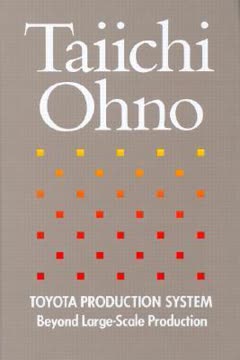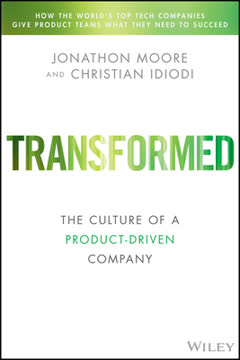Key Takeaways
1. Define value from the customer's perspective to eliminate waste
Muda. It's the one word of Japanese you really must know. It sounds awful as it rolls off your tongue and it should, because muda means "waste," specifically any human activity which absorbs resources but creates no value.
Eliminate waste. The foundation of lean thinking is identifying and eliminating muda - any activity that consumes resources without creating value for the customer. This requires precisely specifying value from the end customer's perspective for each product or service. Common types of waste include overproduction, waiting, unnecessary transport or motion, overprocessing, excess inventory, defects, and unused employee creativity. By ruthlessly eliminating non-value-adding activities, organizations can dramatically improve efficiency and effectiveness.
Focus on the customer. Lean thinkers must resist the tendency to define value based on existing assets, technologies, or organizational structures. Instead, they should engage in dialogue with customers to truly understand their needs and what they are willing to pay for. This customer-centric view often reveals opportunities to eliminate entire steps or processes that don't contribute to customer value.
2. Map the value stream to identify and remove non-value-adding activities
The value stream is the set of all the specific actions required to bring a specific product (whether a good, a service, or, increasingly, a combination of the two) through the three critical management tasks of any business: the problem-solving task running from concept through detailed design and engineering to production launch, the information management task running from order-taking through detailed scheduling to delivery, and the physical transformation task proceeding from raw materials to a finished product in the hands of the customer.
Visualize the entire process. Value stream mapping involves documenting every step required to deliver a product or service, from concept to customer. This end-to-end view often reveals surprising amounts of waste, as most activities are typically non-value-adding. The goal is to create a "future state" map that eliminates as much waste as possible while still delivering customer value.
Categorize activities. When analyzing the value stream, activities generally fall into three categories:
- Value-adding: Activities that directly contribute to what the customer values
- Necessary non-value-adding: Activities that don't create value but can't be eliminated yet (Type One muda)
- Non-value-adding: Pure waste that can be eliminated immediately (Type Two muda)
Take action. Once the value stream is mapped, organizations should immediately eliminate Type Two muda, then work to reduce and eventually eliminate Type One muda over time. This often involves redesigning processes, realigning organizational structures, and challenging long-held assumptions about how work should be done.
3. Create flow by organizing work in a continuous sequence
We are all born into a mental world of "functions" and "departments," a commonsense conviction that activities ought to be grouped by type so they can be performed more efficiently and managed more easily.
Challenge batch thinking. Traditional batch-and-queue processes, where work is done in large batches and then waits in queues, are deeply ingrained in most organizations. Lean thinkers must challenge this mentality and strive to create continuous flow, where products or information move smoothly from one value-creating step to the next without delays or buffers.
Reorganize for flow. Achieving flow often requires:
- Breaking down functional silos
- Realigning equipment and workstations
- Cross-training employees
- Reducing setup times
- Implementing standardized work
- Right-sizing tools and equipment
Benefits of flow. When achieved, continuous flow dramatically reduces:
- Lead times
- Inventory levels
- Quality issues
- Space requirements
- Costs
It also increases flexibility and responsiveness to customer demand.
4. Implement pull systems to produce only what customers demand
The first visible effect of converting from departments and batches to product teams and flow is that the time required to go from concept to launch, sale to delivery, and raw material to the customer falls dramatically.
Produce on demand. In a pull system, nothing is produced until a customer signals demand. This contrasts with traditional push systems that produce based on forecasts, often resulting in overproduction and excess inventory. Pull systems align production with actual customer demand, reducing waste and improving responsiveness.
Key pull techniques:
- Kanban systems to signal replenishment
- Supermarkets to hold limited inventory
- Heijunka (production leveling) to smooth demand
- Takt time to synchronize production pace with customer demand
Extend pull upstream. Once pull is established in final assembly, organizations should work to extend it upstream to suppliers and even to product development. This creates a lean enterprise where the entire value stream responds to customer demand.
5. Pursue perfection through continuous improvement
As organizations begin to accurately specify value, identify the entire value stream, make the value-creating steps for specific products flow continuously, and let customers pull value from the enterprise, something very odd begins to happen. It dawns on those involved that there is no end to the process of reducing effort, time, space, cost, and mistakes while offering a product which is ever more nearly what the customer actually wants.
Never-ending journey. Perfection is the fifth principle of lean thinking, serving as a north star to guide ongoing improvement efforts. While true perfection may be unattainable, the pursuit of it through relentless kaizen (continuous improvement) drives organizations to new levels of performance.
Kaizen process:
- Identify a problem or opportunity
- Analyze the current situation
- Generate potential solutions
- Select and implement the best solution
- Evaluate results and standardize the new process
- Repeat
Create a learning organization. Pursuing perfection requires creating a culture where everyone is engaged in problem-solving and continuous improvement. This involves empowering front-line workers, providing training in lean tools and problem-solving techniques, and celebrating small wins along the way.
6. Lean thinking requires a holistic approach across the entire value stream
What's more, as you take all of the inventories and waste out of your internal value stream, you will become much more aware of the costs and performance problems of firms above and below you along the stream, including your suppliers' suppliers and your distributors' retailers.
End-to-end perspective. Lean thinking must be applied across the entire value stream, from raw materials to end customer, to achieve its full potential. This often requires looking beyond organizational boundaries to suppliers, distributors, and even customers.
Challenges of collaboration:
- Overcoming traditional adversarial relationships
- Aligning incentives across organizations
- Sharing sensitive information
- Coordinating improvement efforts
Benefits of a holistic approach:
- Elimination of inter-company waste
- Faster end-to-end lead times
- Improved quality and consistency
- Greater flexibility and responsiveness
- Lower total costs across the value stream
7. Lean transformations demand strong leadership and cultural change
What's more, even Toyota still occasionally wobbles in its course and the process of introducing lean ideas from one end to the other of Toyota's value streams for its products is not complete even today.
Leadership commitment. Successful lean transformations require unwavering support from top leadership. Leaders must understand lean principles, actively participate in improvement activities, and consistently reinforce lean behaviors.
Cultural shift. Lean is not just a set of tools, but a fundamentally different way of thinking about work. Organizations must shift from:
- Batch to flow
- Push to pull
- Function-based to value stream-based
- Command-and-control to empowerment
- Blame to problem-solving
- Local optimization to system optimization
Overcoming resistance. Change is difficult, and lean transformations often face resistance. Leaders must:
- Communicate a compelling vision
- Provide training and support
- Remove barriers to change
- Recognize and reward lean behaviors
- Address fears and concerns head-on
8. Apply lean principles beyond manufacturing to services and other industries
We hope you can now see the need to precisely specify value and to identify every step in the value stream for specific products, then to introduce flow, and next to let the ultimate customer pull value from its source. However, much of the potential of lean thinking is lost unless you take the final principle to heart.
Universal applicability. While lean thinking originated in manufacturing, its principles can be applied to any process or industry. Service industries, healthcare, construction, software development, and even government agencies have successfully implemented lean practices.
Adapting lean concepts:
- In healthcare: Reducing patient wait times, improving care quality
- In software: Agile development methodologies
- In offices: Streamlining administrative processes
- In construction: Reducing project delays and cost overruns
- In retail: Improving inventory management and customer service
Challenges in non-manufacturing. Applying lean in service environments often requires:
- Redefining "value" and "waste" for intangible outputs
- Adapting visual management techniques
- Dealing with greater variability in demand and processes
- Overcoming the "we're different" mentality
9. Lean enterprises collaborate across organizational boundaries
The lean enterprise is itself the verification mechanism and would continue for the life of the product.
Beyond individual firms. A lean enterprise extends lean thinking across multiple organizations involved in delivering value to the end customer. This requires unprecedented levels of collaboration and trust between traditionally separate entities.
Characteristics of lean enterprises:
- Shared vision of customer value
- Transparent information flow
- Aligned incentives and risk-sharing
- Joint problem-solving and continuous improvement
- Long-term partnerships
Benefits of lean enterprises:
- Faster innovation and time-to-market
- Reduced total costs across the value stream
- Improved quality and consistency
- Greater flexibility and responsiveness to market changes
- Sustainable competitive advantage
10. Sustain lean progress through policy deployment and visual management
It's also important to note that the process is top-down in the first step of setting goals but top-down/bottom-up in subsequent steps.
Policy deployment. Also known as hoshin kanri, policy deployment is a systematic process for aligning organizational goals with improvement activities at all levels. It ensures that everyone is working towards common objectives and that resources are focused on the most critical improvements.
Key elements of policy deployment:
- Clear, measurable goals cascaded through the organization
- Regular review and adjustment of plans
- Two-way communication between levels
- Focus on a limited number of breakthrough objectives
Visual management. Making the current state, targets, and progress visible to everyone in the organization is crucial for sustaining lean improvements. Visual management techniques include:
- Andons to signal problems
- Kanban boards to manage flow
- Performance boards to track metrics
- Standard work displays
- Value stream maps
These visual tools create transparency, facilitate rapid problem-solving, and reinforce lean behaviors.
11. Lean thinking drives competitive advantage and financial performance
If you are really determined to be the change agent and you get a good sensei (or become one yourself), we guarantee you will achieve extraordinary things. The techniques we have described in the earlier chapters have been tested around the world in a wide variety of industries, and they always work.
Tangible results. Organizations that successfully implement lean thinking typically see dramatic improvements in key performance indicators:
- 50% or greater reduction in lead times
- 30-50% improvement in labor productivity
- 50-90% reduction in inventories
- 50-90% reduction in quality defects
- 50-90% reduction in space requirements
Financial impact. These operational improvements translate into significant financial benefits:
- Increased revenue through faster time-to-market and improved customer satisfaction
- Reduced costs through elimination of waste and improved productivity
- Improved cash flow through inventory reduction
- Higher return on assets through better utilization of resources
Sustainable advantage. Unlike many business improvement fads, lean thinking creates lasting competitive advantage by fundamentally changing how work is done and value is created. Organizations that master lean principles can continually improve faster than their competitors, creating a widening performance gap over time.
Last updated:
FAQ
What's Lean Thinking about?
- Core Concept: Lean Thinking by James P. Womack focuses on eliminating waste (muda) to create value for customers. It emphasizes efficiency by doing more with less—less time, space, and effort.
- Five Lean Principles: The book outlines five principles: specify value, identify the value stream, make value flow, let customers pull value, and pursue perfection. These guide organizations in transforming processes.
- Industry Application: Lean principles apply across various sectors, from manufacturing to services, enhancing efficiency and customer satisfaction universally.
Why should I read Lean Thinking?
- Timeless Relevance: Despite its 1996 publication, the principles remain relevant, especially during economic downturns, helping companies focus on value creation.
- Proven Success Stories: Includes real-world examples of successful lean implementations, offering practical insights and inspiration for readers.
- Framework for Improvement: Provides a structured approach to improving organizational processes, valuable for managers and leaders seeking enhanced performance.
What are the key takeaways of Lean Thinking?
- Elimination of Waste: Identifying and eliminating waste in all forms is crucial for enhancing efficiency, including unnecessary steps and delays.
- Customer-Centric Approach: Emphasizes defining value from the customer's perspective, ensuring activities contribute to delivering what the customer truly wants.
- Continuous Improvement: Pursuing perfection is a continuous journey, involving both incremental improvements (kaizen) and radical changes (kaikaku).
What is the definition of "muda" in Lean Thinking?
- Meaning of Muda: Muda is a Japanese term for "waste," referring to activities consuming resources without adding value, like errors and excess inventory.
- Types of Muda: Includes overproduction, waiting, transportation, processing, inventory, motion, and defects. Recognizing these is crucial for effective waste elimination.
- Impact on Organizations: Addressing muda improves operational efficiency and reduces costs, leading to better financial performance and customer satisfaction.
How does Lean Thinking define value?
- Customer-Defined Value: Value is defined from the customer's perspective, meeting their needs at a specific price and time.
- Specific Product Focus: Articulating value in terms of specific products or services ensures clarity in offerings and aligns processes with customer expectations.
- Challenges in Specification: Common pitfalls include focusing on internal capabilities rather than customer needs, which must be overcome for successful lean implementation.
What are the five principles of lean thinking in Lean Thinking?
- Specify Value: Define what constitutes value from the customer's perspective, focusing on specific products and services.
- Identify the Value Stream: Map all actions required to bring a product from concept to delivery, distinguishing between value-creating and non-value-creating steps.
- Make Value Flow: Organize processes to ensure continuous flow of value-creating steps, minimizing interruptions and delays.
- Let Customers Pull Value: Implement a pull system where production is based on actual customer demand, reducing excess inventory.
- Pursue Perfection: Commit to continuous improvement, recognizing room for enhancement in processes and products.
What is value stream mapping as described in Lean Thinking?
- Definition: A visual tool to analyze and design the flow of materials and information required to bring a product to the customer.
- Steps in Mapping: Involves mapping every step in the value stream, categorizing actions into value-creating, necessary but non-value-adding, and eliminable.
- Benefits: Helps pinpoint inefficiencies, streamline processes, and enhance overall performance, essential for implementing lean principles effectively.
What is the "Just-in-Time" (JIT) method discussed in Lean Thinking?
- Core Principle: JIT is a production strategy to improve ROI by reducing in-process inventory and associated carrying costs.
- Pull System: Operates on a pull system where production is based on customer demand, ensuring products are made only when needed.
- Benefits: Leads to reduced waste, improved quality, and increased efficiency by synchronizing production with demand.
How does Lean Thinking address the role of leadership in lean transformation?
- Change Agent Importance: Emphasizes the need for a change agent to lead the lean transformation, inspiring others and understanding lean principles.
- Support from Management: Requires strong support from top management, with leaders committed to promoting lean thinking throughout the organization.
- Empowerment of Employees: Focuses on empowering employees to contribute to the lean transformation, fostering a culture of continuous improvement.
What challenges might organizations face when adopting lean thinking according to Lean Thinking?
- Cultural Resistance: Overcoming resistance to change is a major challenge, as employees may be accustomed to traditional ways of working.
- Sustaining Momentum: Maintaining momentum after initial successes can be difficult; lean thinking must become ingrained in the culture.
- Balancing Goals: Balancing short-term financial pressures with long-term lean transformation goals is crucial for sustainable success.
What are some examples of companies that successfully implemented lean thinking?
- Toyota: Pioneer of lean thinking, achieving efficiency and quality through continuous improvement and waste elimination.
- Wiremold: Transformed operations by adopting lean principles, resulting in doubled sales and significant productivity improvements.
- Pratt & Whitney: Streamlined production processes using lean techniques, reducing lead times and costs while improving quality.
What are the best quotes from Lean Thinking and what do they mean?
- "Muda is everywhere.": Highlights the pervasive nature of waste, emphasizing the need for vigilance in identifying and eliminating it.
- "Lean thinking is lean because it provides a way to do more and more with less and less.": Encapsulates the essence of lean thinking, focusing on maximizing value while minimizing resources.
- "Perfection doesn’t seem like a crazy idea.": Reflects the belief that striving for perfection is realistic within lean thinking, encouraging organizations to aim high and continuously seek improvement.
Review Summary
Lean Thinking receives mostly positive reviews for its insights on eliminating waste and improving efficiency in organizations. Readers appreciate the real-world examples and practical application of lean principles across industries. Some find the writing style dry and repetitive, while others consider it a fundamental text for understanding lean methodology. Critics note the book's focus on manufacturing and dated examples, but many still find value in its core concepts for modern businesses. Overall, it's viewed as an important resource for those interested in process improvement and organizational efficiency.
Similar Books









Download PDF
Download EPUB
.epub digital book format is ideal for reading ebooks on phones, tablets, and e-readers.






